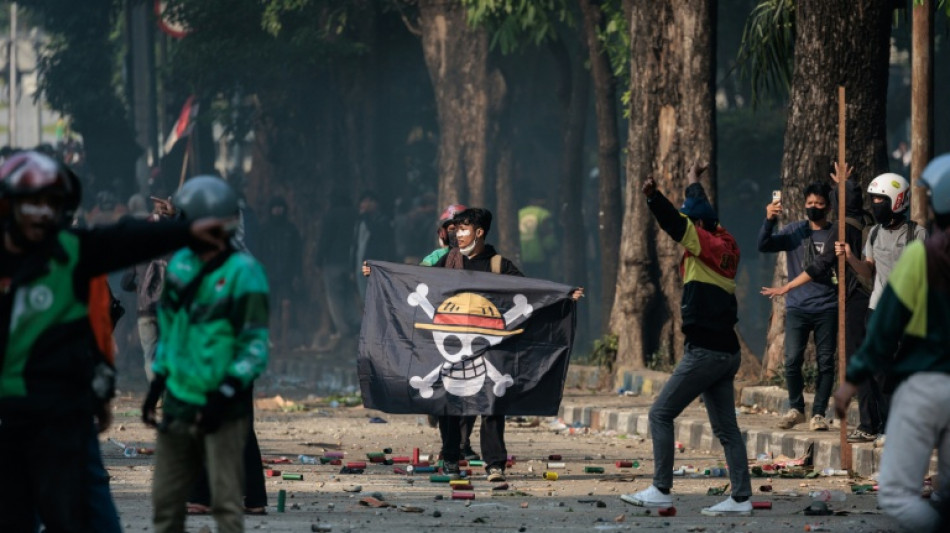

Hoist the jolly manga: Gen Z protesters rally to One Piece pirate flag
With a yellow straw hat and a wicked toothy grin, he bobs among crowds of protesting youngsters from Asia to Africa to Latin America and Europe -- a smirking reproach to governments everywhere.
Born in the cult manga series "One Piece", the cartoon skull and crossbones has in recent weeks become the flag of anti-establishment demonstrations worldwide.
An emblem of the hero Luffy -- fighter of cruel powers, liberator of the oppressed -- in the best-selling comic books dating to 1997, the stylised pirate flag is a rallying sign for Gen Z, the generation of 20-somethings who have come of age since.
"I grew up with One Piece, like the vast majority of Gen Z, so it has become a symbol for us," said Kai, a 26-year-old protester who joined recent youth demos in Madagascar.
For Kai -- who identified himself by a pseudonym -- the series carries a clear message of struggle against "oppressive governments".
The Luffy flag was first sighted flying over the heads of young demonstrators during recent rallies in Indonesia, where the government threatened to ban it.
It has since been seen at protests in countries including Nepal, the Philippines, France and Peru.
In Madagascar, the Indian Ocean island struck by protests this week against power and water failures, the flag was promoted by organisers via the Instagram account "Gen Z Madagascar".
- Fighting 'World Government' -
In Japanese artist Eiichiro Oda's cult series -- some 100 books and counting -- Monkey D. Luffy sails the seas striving to become the Pirate King.
His is a "universal" epic quest, according to Phedra Derycke, author of the book "One Piece: Lessons of Power."
"It is a series that has lasted for more than 20 years, sold hundreds of millions of copies worldwide, and conveys ideals of dreams and freedom," he said.
Stopping on various islands -- inspired by real countries, including Egypt, Spain and Japan -- he fights to end the oppressive reign of the World Government. The books also carry an ecological message.
"Behind the pirate adventure accessible to everyone, Oda develops many political themes: a ruling caste that exploits the people, slavery, discrimination, racism," said Derycke -- who perceived echoes of scenes from One Piece in the recent youth rallies.
As for the cartoon death's head, he added, it is a suitably "depoliticised" symbol, adaptable to protests in a variety of settings.
- Online manga unifier -
It popped up during recent protests in France, a fresh face among the familiar banners of labour unions.
A protester carrying the Luffy banner in the southern city of Lyon, 45-year-old teacher Julien Dubon, said he was sharing what "the youth of Asia... started".
"It will reach many more people than those (union) flags you see behind me," he told AFP.
"Those will speak to certain (older) generations and perhaps less to others."
Anthropologist Elisabeth Soulie, author of a book about Generation Z, saw the Luffy flag as an "emotional" emblem and a "unifier" of young people who typically mobilise collectively online, without clear leadership.
From its Asian origins, the flag was recently sighted in Peru. Through social networks, said manga specialist Derycke, Luffy's pirate flag could "get even bigger around the world".
A.Edwards--PI



